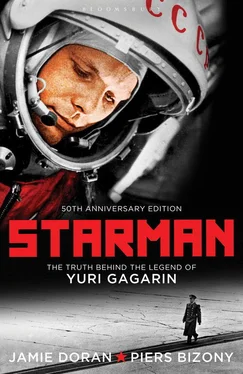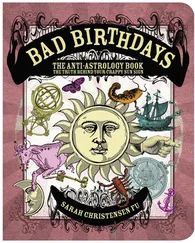As Bykovsky demonstrates, the testimony about radar signals is complex and ambiguous. He readily admits that the tracking equipment was unable to keep simultaneous tabs on both the positions and altitudes of nearby aircraft. ‘Either the blips on the screen appear or they disappear. If a plane changes altitude, it disappears for ten seconds, so the signal on a radar screen isn’t always constant. At forty kilometres’ distance from the airbase the signals disappear altogether.’
Leonov says that Bykovsky’s report of at least one – and possibly two – additional target on his radar screen was discounted by the commission. ‘It was attributed to his lack of experience. They took him away somewhere, and I don’t know exactly what happened to him. In any case, none of this appeared in the subsequent documentation. The fact that I provided this information [about the two bangs] and spoke to people who saw the other plane – this wasn’t enough for the commission. That’s why no one knows about the other plane, except its pilot and his conscience.’
In fact, a second MiG pilot, Andrei Koloshov, emerged from obscurity in April 1995 to admit that he was indeed flying in the area at the time. In the journal Argumenti i Fakti (Arguments and Facts) he said, ‘The cause of Gagarin’s death was that he was reckless in taking an unjustifiable risk. He and Serugin deviated from their proper flight pattern.’ [11] Interview with Koloshov, Argumenti i Facti , No. 12, week of April 2–April 9, 1995.
Koloshov suggested that the two men agreed to fly away from their designated zone in search of clearer weather, so that they could at least try out some basic manoeuvres. He presented absolutely no evidence to support his theory. Perhaps he had a guilty conscience. The original traffic-control voice tapes (finally unearthed by Leonov and Belotserkovsky in 1986 after a long battle with the authorities) show that, far from flying recklessly, Serugin had cut an intended 20-minute training session down to five minutes because of the poor weather. Bykovsky remembers without prompting that the last voice communication from Serugin was to say that ‘their job was done. He told us everything he was doing. He had completed the training task and he asked for permission to come out of [the current flight zone]. Then the radio link was lost.’
Koloshov’s charge of recklessness on Serugin’s part seems unjust, but today Leonov is not concerned with the MiG pilot’s ungenerous testimony, because he is still convinced that this pilot and his subsonic MiG-15 were utterly irrelevant and had nothing to do with Gagarin’s death. ‘No MiG-15 could have made the supersonic bang that I heard that morning.’ Leonov and Belotserkovsky still assert that a supersonic Sukhoi SU-11, never firmly identified in the confused radar data, was the true culprit – in the air, at least.
Leonov is generous towards the SU-11’s pilot, whoever he may have been. ‘If he’d been identified at the time, he’d have been torn to pieces by an angry crowd. On the one hand, they should have released this information; but on the other, if we think about it wisely, perhaps not. It wouldn’t remedy anything.’ It was not so much a single pilot but ‘the whole system that allowed for Gagarin’s death. The entire system. You can’t take the entire system to court. You can judge it morally, but you can’t punish it.’
The ‘system’ did not want to be judged or punished. In all, the commission’s report accumulated twenty-nine thick volumes of technical data, but the mere appearance of fact-gathering was not the same as making a fair analysis of the causes. The 1968 commission report’s central judgement was deliberately vague and simplistic: ‘an aggregate of causes’. The main thesis – the grazing impact with a weather balloon – suited everyone because it was the most innocent. No one was to blame – at least, no one on the ground.
One of the commission’s hardest-working investigators, Igor Rubstov, supported Leonov’s and Belotserkovsky’s theory that a supersonic aircraft had come close to colliding with Gagarin’s and Serugin’s MiG. As the commission moved ever further away from this difficult territory, Rubstov gathered all his courage and went to the KGB headquarters in the Lubyanka to argue his case. ‘I can’t say I felt too confident in that particular building.’ He met Colonel Dugin of the KGB, who demanded to know why he was insisting on the collision theory. Rubstov bluffed in classic Russian style. ‘I said that if the commission failed to investigate [the near-collision scenario], people might think there was something to hide. It was better to investigate it properly to demonstrate that it was not the true version of events.’ Colonel Drugin was unimpressed. On his desk there was a slim folder, which he now opened. It turned out to be Rubstov’s personal file. ‘You don’t honour discipline very much, do you?’ the Colonel said.
Rubstov knew that he was referring to an incident during the war, when an aviation unit at Stalingrad had retreated, quite justifiably, to a safer position under intense German attack. For twenty years and more, no particular inference had been drawn from this event. Drugin now implied that he could use this ancient story as proof of Rubstov’s cowardice, simply because he had been a member of the retreating unit. Drugin did not have to make this threat in so many words. He merely opened the personal file at the relevant page so that Rubstov could catch a glimpse of its contents, then asked him to reconsider his ideas about the near-collision scenario. ‘Later on, this version was not confirmed,’ Rubstov forlornly admits.
Leonov and his closest colleagues wanted to learn the truth about the crash. It took them the best part of two decades, but in 1986 Belotserkovsky lobbied successfully for a new commission of inquiry. He gained access to the secret investigation documents and original supporting materials, including unedited voice tapes of the air-to-ground dialogue. Meanwhile Leonov was amazed to find that documents supposedly written by him in 1968 as part of the original commission of inquiry were in someone else’s handwriting. ‘They were rewritten, and certain effects were falsified.’ Leonov’s accusation comes as no great surprise to security expert Nikolai Rubkin. ‘I can’t exclude that possibility. We’ve never had any problem in our country finding people to forge signatures. There have always been plenty of ranch-hands skilled in this kind of art.’
Belotserkovsky discovered that all the radar operators were hopelessly confused at the time of the crash. ‘First of all, I noticed that the tapes of the conversation between the flight controller and Gagarin’s plane contain a curious moment. The thing is, the controller was still calling out Gagarin’s call sign, six-two-five, after his plane had already crashed. The controller’s voice was perfectly calm. He wasn’t nervous. But from minute forty-two of the tape, he did show some nervousness. That was about twelve minutes after the crash.’ Belotserkovsky was suspicious about the long delay in the controller’s reactions. Even allowing for the sluggish response of the radar equipment, the MiG-15’s blip must have dropped off the screens eventually, as the actual aircraft plunged towards the ground, but it took a full twelve minutes for the controllers to realize that anything was wrong. This may explain the ten-minute discrepancy in the timing of the crash that Bykovsky describes, with some discomfort, in his interview.
Belotserkovsky found many other flaws in the ground-control procedures, and in the original commission’s fudged report. The standard practice back in 1968 was to make photographic records of traffic-control radar screens at set intervals. An automatic system of cameras was built into the consoles to do this, but on March 27 the cameras at Chkalovsky were not working, so the controllers resorted to a crude back-up recording system. They placed pre-cut sheets of tracing paper across their radar screens and marked the positions of the various targets at intervals. Belotserkovsky found the old and faded sheets tucked discreetly into a folder marked ‘secondary material’, as if to disguise their importance. ‘There was a whole spectrum of conditions that we did not manage to cover while working on the original commission. We agreed that two particular lines of evidence, the voice tapes and the tracing-paper sheets, showed that the traffic controller was talking to a different plane, which he mistook for Gagarin’s. Most likely, Gagarin’s plane got so close to the other plane that they appeared for a moment on the radar screen as a single target. When Gagarin’s plane went into a spin, the other one was still on the screen.’
Читать дальше












